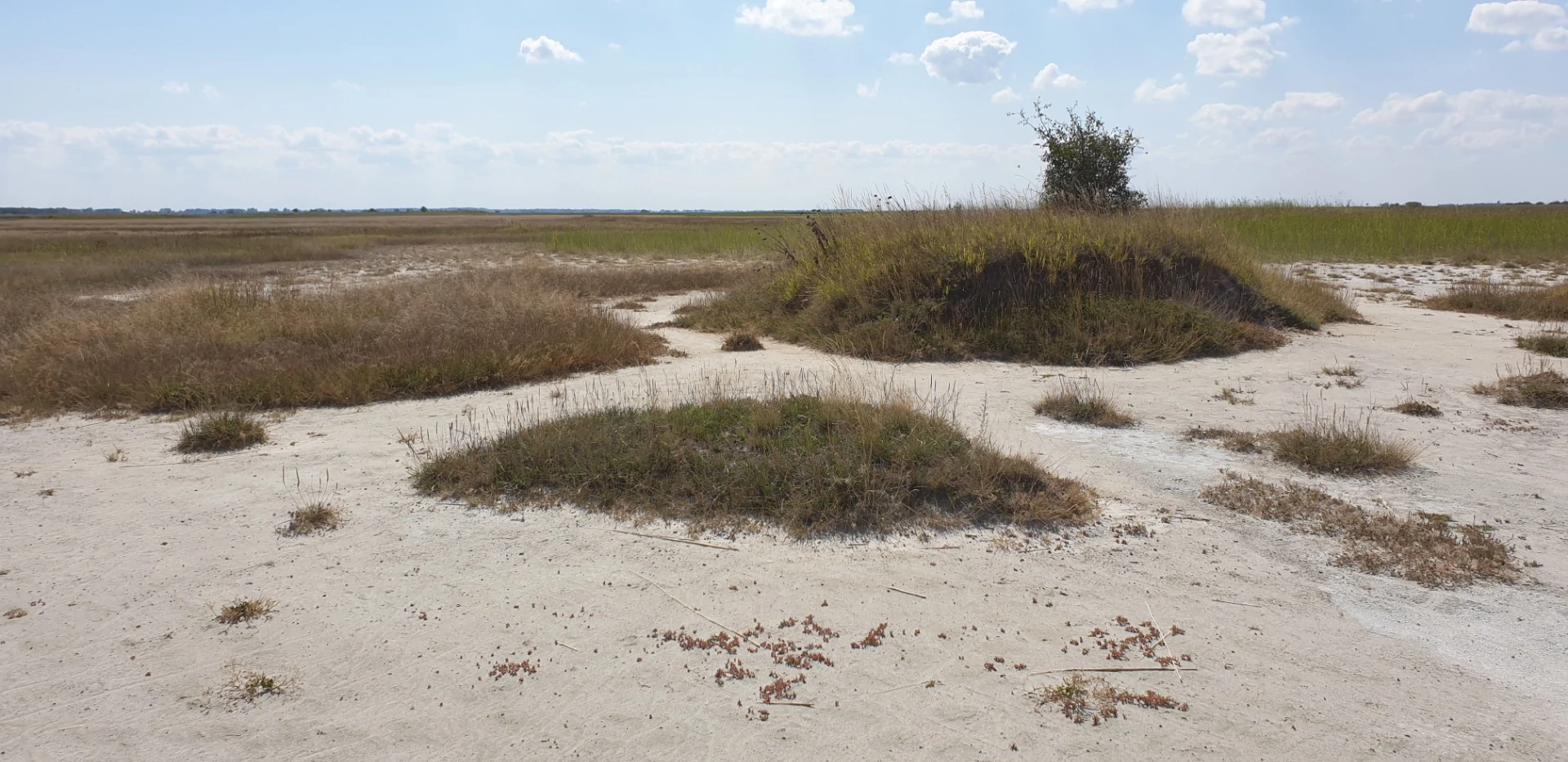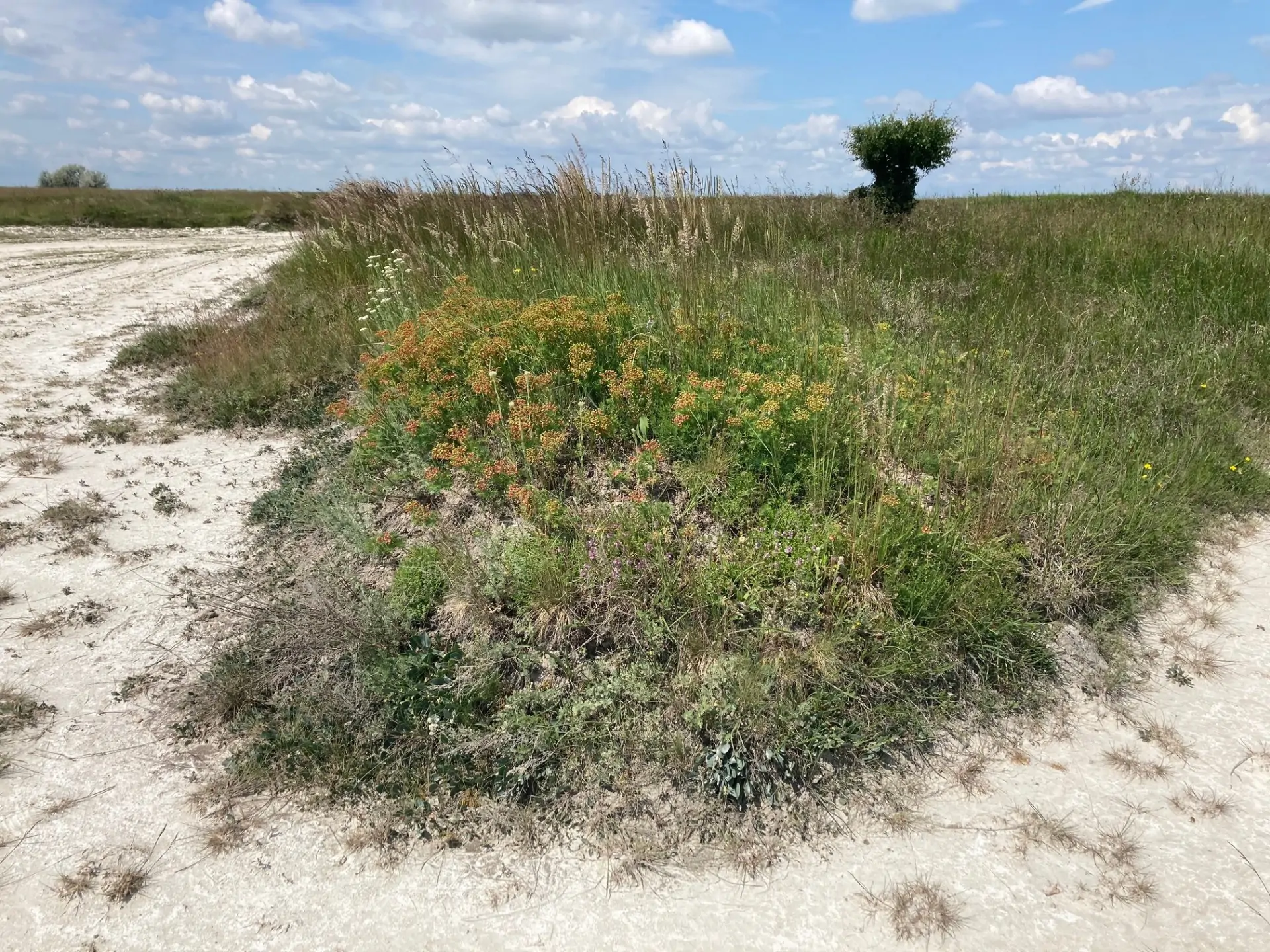Location
PROJECT AREA
The project area is the northern part (4235 ha) of the Miklapuszta landscape unit of Kiskunság National Park in south-central Hungary.
GENERAL DESCRIPTION
The Miklapuszta unit is the second largest alkali grassland area in the Danube-Tisza interfluve region after the Upper Kiskunság grassland system. The project area is an undisrupted open landscape with a unique collection of alkali land forms in Hungary, including the tallest (up to 1.5 m) eroding loess plateaus in the Carpathian Basin and bare alkali flats extending to hundreds of meters. The project area harbours a complete series of alkali habitat types in well-preserved status. Extensive alkali marshes are bordered by alkali meadows, extensive salt-covered surfaces not found elsewhere in Hungary, and alkali steppes interspersed with loess plateaus covered by species-rich loess steppic grasslands, one of the most threatened terrestrial habitat types in Hungary. Alkali marshes cover 27% of the total area of the unit, followed by croplands (18%), alkali meadows (16%), and bare alkali flats (13%), while dry grasslands (10%), secondary old field successions (6%) and mugwort steppe (4%) extend to smaller areas.
HABITAT TYPES, VEGETATION
In the northern part of the Miklapuszta unit, marshes occupy large areas in the low-lying former floodways running mostly from north to south. Alkali marshes are most often dominated by common reed (Phragmites australis), either in a closed stand or mixed with Broadleaf or Narrowleaf Cattail (Typha latifolia, T. angustifolia). Marsh-meadow transitions are dominated by extensive stands of Sea Clubrush (Bolboschoenus maritimus). Alkali meadows of three types surround the marshes: sedge meadows (Agrostio-Caricetum distantis), foxtail meadows (Agrostio-Alopecuretum pratensis), and spikerush meadows (Eleochari-Alopecuretum geniculati). At intermediate microtopographic elevations, meadows give way to bare alkali flats with no vegetation at all or sparse vegetation of a few halophytic plants (Lepidio-Camphorosmetum annuae in drier and Lepidio-Puccinellietum limosae in wetter conditions). Dry mugwort steppes (Artemisio santonici-Festucetum pseudovinae) are found around or on gentle slopes of alkali or loess plateaus. The loess plateaus emerge from the bare alkali flats with steep slopes to heights up to 1.5 m and are covered with three types of dry grassland: species-rich loess steppic grasslands (Salvio-Festucetum rupicolae), dry grasslands dominated by Brachypodium pinnatum, or alkali pastures (Achilleo-Festucetum pseudovinae), the latter often with extensive stands of the feathergrass Stipa capillata. Secondary versions (on old fallow land) or degraded versions of these meadows and grasslands are found in about two-thirds of the area. The Miklapuszta unit hosts 14 protected species and one strictly protected species of plants.
FAUNA
The Miklapuszta unit is a stronghold of the Habitats Directive Annex II carabid beetle subspecies Dorcadion fulvum cervae, which is endemic to the alkali areas of the Kiskunság region.
– Black-tailed Godwit (Limosa limosa): 10-15 pairs
– Black-winged Stilt (Himantopus himantopus): 10-20 pairs
– Collared Pratincole (Glareola pratincola): 2-3 pairs
– Common Redshank (Tringa tetanus): more than 100 pairs
– Common Snipe (Gallinago gallinago) : 2-3 pairs
– Eurasian Curlew (Numenius arquata): 1-2 pairs
– Eurasian Stone Curlew (Burhinus oedicnemus): 20-25 pairs
– Kentish Plover (Charadrius alexandrinus): 80-100 pairs
– Northern Lapwing (Vanellus vanellus): 80-100 pairs
– Pied Avocet (Recurvirostra avosetta): 10-20 pairs
Currently only few dozen pairs of lapwings and redshanks breed, and avocets and stilts nest in wetter years, but the other species have gone extinct from Miklapuszta.
Miklapuszta is also home to a number of important farmland bird species, such as the Common Kestrel (Falco tinnunculus), Common Quail (Coturnix coturnix), Common Starling (Sturnus vulgaris), Common Whitethroat (Sylvia communis), Corn Bunting (Miliaria calandra), Crested Lark (Galerida cristata), European Bee-eater (Merops apiaster), Grey Partridge (Perdix perdix), Lesser Grey Shrike (Lanius minor), Northern Lapwing (Vanellus vanellus), Red-backed Shrike (Lanius collurio), Skylark (Alauda arvensis), Tawny Pipit (Anthus campestris), Yellow Wagtail (Motacilla flava).
In addition, a breeding population of 30-40 individuals of Great Bustards (Otis tarda) in the southern part of Miklapuszta is also note-worthy.




